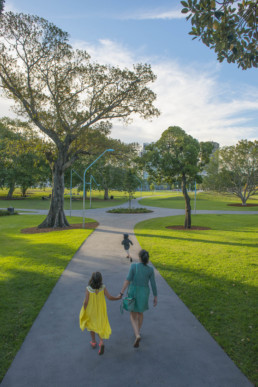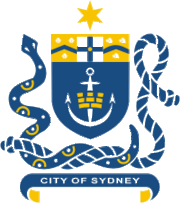Sydney has developed an adaptation strategy across multiple jurisdictions to safeguard the city from pressing climate change risks.
To protect Sydney from climate change-related extreme weather ranging from changing rainfall patterns and rising sea levels to more severe heat waves, the city developed the Sydney Climate Adaptation Strategy, taking an inclusive and collaborative approach to the multiple jurisdictions operating across Sydney’s local government. In developing the strategy and prioritizing actions, a scientific reference group was established to ensure rigorous academic inputs, an interdependency analysis was undertaken to identify responses to climate risks and extreme weather, and a citizens’ panel was created to review adaptation actions and increase democratic engagement.
10,250 trees planted as part of the strategy
Cities100 – 2015
The city’s efforts are paying off, and Sydney’s Climate Adaptation Strategy is seeing results. Many adaptation actions have been realized, such as the Urban Forestry Strategy, resulting in over 10,250 trees planted, drought-proofing parks, and testing light-colored pavement to reduce the urban heat island effect. New planned actions include a heat wave management plan, detailed community vulnerability assessment, and community awareness-raising.

The challenge
In Australia, a lack of national-level political commitment to climate change adaptation has meant that local policy development is the best course of action for cities eager to create meaningful change. Sydney has demonstrated significant leadership in terms of adapting to the effects of climate change such as extreme heat, frequent storms, and sea level rise.
Co-benefits
Economic Sydney’s Climate Adaptation Strategy advocates for more tree-lined streets, which are proven to increase property values.
Environmental The additional trees have improved Sydney’s air quality, and the urban tree canopy has increased to cover 23% of the city.
Health Part of the Climate Adaptation Strategy is revising outdoor working practices for city staff to address heat-related health risks.
Social The community vulnerability assessment is leading to stronger community networks, with the city helping residents to help each other.
About Sydney
Sydney is the state capital of New South Wales and the most populous city in Australia and Oceania. As of June 2016 Sydney’s estimated population was 5,029,768. Furthermore, 36 percent of the population reported having been born overseas. Despite being one of the most expensive cities in the world, the 2014 Mercer Quality of Living Survey ranks Sydney tenth in the world in terms of quality of living, making it one of the most livable cities.


